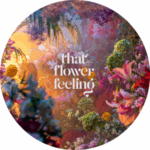For centuries, flowers have symbolized beauty and elegance. From the timeless red rose to the simple daisy, flowers can express what words sometimes can’t. But floral design, like all art forms, is evolving.
Floral design has evolved beyond simply arranging flowers as they are, it’s now about transforming them through tinting and painting. This is where tradition meets creativity, and color knows no rules. It’s not just about what flowers are, but what they can become.
The Origins
Chrysanthemums, known for their durability, longevity, and exceptional absorbency, quickly became the ideal canvas for experimenting with synthetic dyes. Early on, florists and growers began infusing these blooms with bold, non-natural colors, sparking a trend that captured public imagination: Crazy Daisies.
These were not your average bouquet fillers. Crazy Daisies came in neon blues, shocking pinks, and lime greens colors that had never been seen in the flower market before. These hues were jarring to some, thrilling to others, but undoubtedly memorable.
At a time when the floral industry was deeply rooted in the traditional palette of reds, whites, yellows, and pinks, these electrified blooms were a rebellious departure. They were pop art for the petal world, and they sparked an important question: If we can change a flower’s color, what else can we do?
The Evolution
The next major evolution in flower tinting came with the rise of rainbow roses. Unlike Crazy Daisies, where the whole flower was soaked in dye, rainbow roses required a more sophisticated approach. Growers would carefully split the rose’s stem into several channels and place each section in a different colored dye. Over time, the petals absorbed the colors, creating a bloom with streaks of blue, green, pink, yellow, and orange.
Rainbow roses marked a turning point, transforming flower tinting from a playful novelty into a true art form. Their multicolored petals became powerful symbols of diversity and individuality. Popular for birthdays, pride events, and celebrations of self-expression, rainbow roses elevated the craft of tinting to new creative heights.
Today’s Era
As floral design continues to evolve, so does the artistry of flower tinting. Farms and floral designers today aren’t just soaking flowers in dye or splicing stems, they are hand-painting petals, using airbrush techniques, and creating completely custom designs for every season and celebration.
Today’s tinted flowers are about storytelling, individuality, and experience. A single rose might be painted to resemble a galaxy, with swirls of midnight blue, violet, and silver specks. Another might be colored with a candy-cane resemblance for the holidays, or a pastel shade for Easter.
Why It Matters
Tinted flowers were once considered controversial in the floral industry. Some purists believed that altering a flower’s natural color diminished its authenticity or cheapened its meaning. But as with many disruptive innovations, time has proven otherwise.
Consumers today want more than tradition, they want emotional and personalized experiences. Tinted flowers now serve purposes far beyond aesthetics. They allow people to express individuality, celebrate causes, honor memories, and design events with unprecedented creativity.
Imagine a bridal bouquet painted to match the exact shades of a bride’s cultural heritage. Or memorial flowers tinted in a loved one’s favorite sports team colors. Or even corporate floral arrangements that reflect a brand’s logo and personality. The possibilities are limited only by imagination.
The sentiment that flowers must be “natural” to be beautiful is fading. We’re entering an era where nature and creativity coexist, where the natural beauty of a flower is enhanced, not diminished, by the human hand.
Far from being a passing fad, the tinting and customization of flowers empowers florists, farms, and consumers alike to challenge conventions and redefine what beauty looks like. With each new season, floral artists push boundaries, and customers continue to demand more personalized, more meaningful, more vibrant creations.
Tinted flowers have come a long way from their roots in Crazy Daisies and neon mums. What started as a playful experiment has grown into a respected art form. From the vibrant swirls of rainbow roses to the hand-painted petals of today’s custom blooms, tinting has forever altered the floral landscape, not by replacing nature, but by collaborating with it.
Ryan Marrero
Equiflor/Rio Roses





